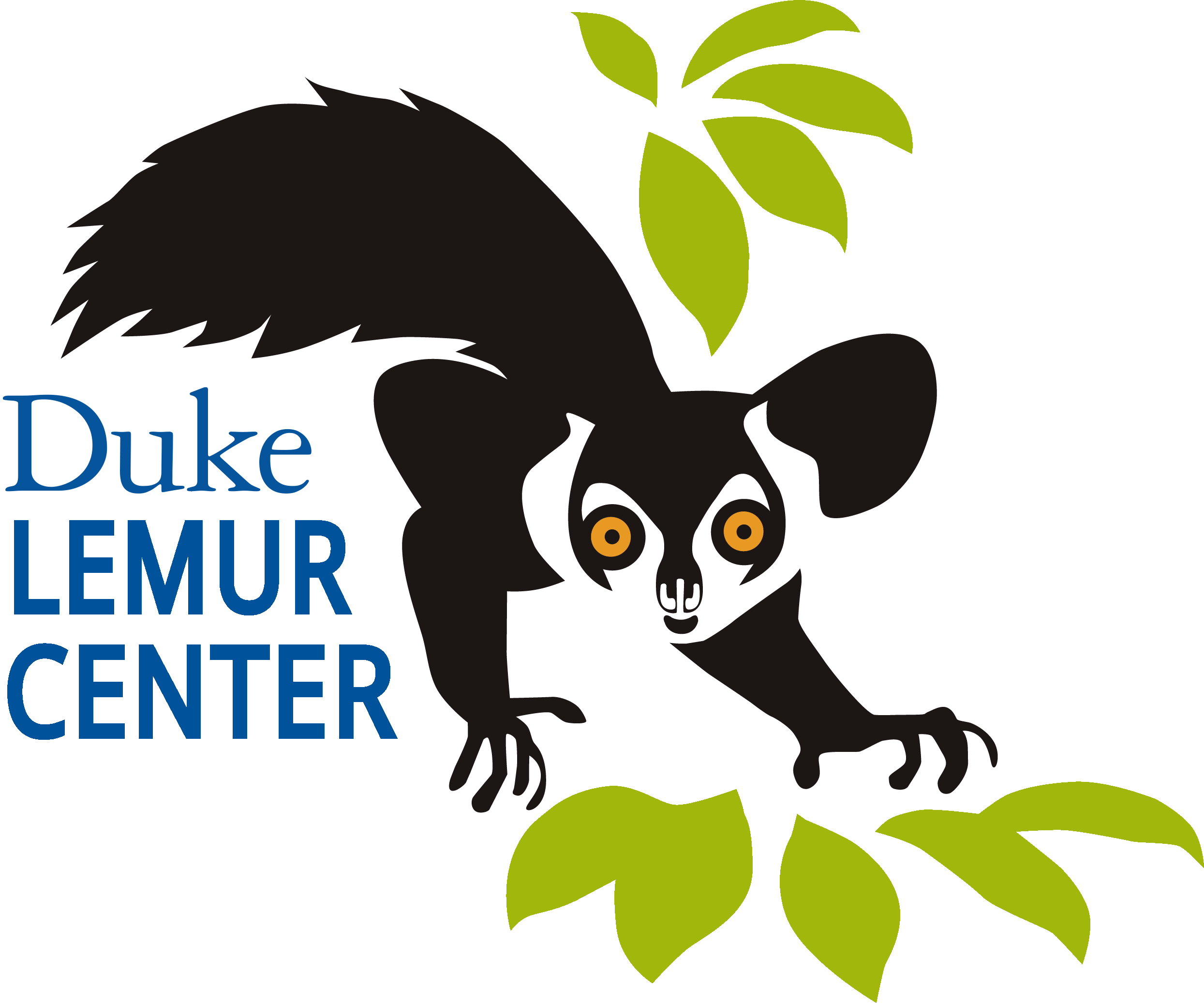- Discover: Research
- Engage: Education
- Protect: Conservation
- Get Involved
- Support Us
- About
- Schedule Visit
- Donate
Search Our Site
The time is now
Lemurs are the most endangered mammals on Earth

about
Duke Lemur Center
Founded in 1966 on the campus of Duke University in Durham, NC, the Duke Lemur Center is a world leader in the study, care, and protection of lemurs—Earth’s most threatened group of mammals.
With more than 200 animals across 13 species, the DLC houses the world’s most diverse population of lemurs outside their native Madagascar.
Our Mission
To advance science, scholarship, and biological conservation through non-invasive research, community-based conservation, and public outreach and education.


Facebook Feed
We're excited to announce our first small nocturnal infants of the year: Swift, Cooper, and Sora! 💕
➡️ lemur.duke.edu/java-triplets
On May 19th, fat-tailed dwarf lemur Java Chicken gave birth to three healthy infants! Java Chicken is a first-time mom, while dad Francolin has previously sired other offspring. Like all fat-tailed dwarf lemurs born at the Duke Lemur Center, Java Chicken’s triplets are named after birds. Sora (male) shares his name with a small waterbird; Cooper (male) is named after a bird of prey, the Cooper’s hawk; and Swift (female) shares her name not just with pop superstar Taylor, but also a migratory bird that spends most of its life airborne 🦅
Java Chicken has thus far been a fantastic mother, and her infants are incredibly curious and energetic. Java Chicken built her nest out of a recycled Coke box, filled with fresh browse provided by her keepers (check the third photo to see mom, the nest, and a sneaky cameo from one of the babies!) 🤩
If you symbolically adopt fat-tailed dwarf lemur Raven through our Adopt a Lemur program, you'll be excited to learn that these are her newest grandlemurs! Learn about how you can support the care and conservation of lemurs through our symbolic adoption program at lemur.duke.edu/adopt 🥰
📸: Madison A. (1,5); Sarah K. (2,3,4,6) ... See MoreSee Less
7 CommentsComment on Facebook
Congratulations 🎈
So very tiny. They look very healthy.
So precious!
View more comments
Join our team of garden volunteers to help feed hungry lemurs! 🌽
➡️ lemur.duke.edu/volunteer
Are you looking to get your hands dirty and work outside? If so, we need you! The Duke Lemur Center is looking for volunteers to help care for the DLC vegetable gardens, pocket prairie, tropical garden, and landscaping around the grounds. The food forest and veggie garden provide a supplemental organic food source for our resident lemurs. The pocket prairie, tropical garden, and landscaping around the center serve as food for native pollinators, while also beautifying the spaces where our guests tour and learn about our conservation mission 🍓
Garden duties include planting, weeding, watering, harvesting, composting, and occasional hard labor of working the soil. No gardening experience necessary but is always helpful. A 2 hour commitment per week is required. While at work in the gardens, volunteers are welcome to pause and watch the lemurs 🤩
Visit our website at lemur.duke.edu/volunteer to learn more and apply! 💚
📸: David Haring (mongoose lemur Rico) ... See MoreSee Less
4 CommentsComment on Facebook
What a dream job, gardening and lemurs = heaven! Just my commute to work (UK to USA) would take me a while each week...🤣
Thank you Volunteers!!!!
If I was closer we would.
Remember, kids: eat your fruits and veggies! 🍊
Mongoose lemur Bonita's female infant just turned three months old! Just like her mama, this little girl loves snacking on sweet fruits, although she still gets most of her nutrients from nursing. Bonita's infant has grown incredibly curious and now spends most of her time independent, and guests on General and Private Tours often spot this little lemur bouncing from branch to branch in her enclosure while mom and dad attempt to nap in the background 😂
➡️ lemur.duke.edu/ultimate
Bonita's infant still doesn't have a name—and YOU could be the one to name her! With a tax-deductible donation of $20,000, you (or your family, company, organization, etc) can *symbolically* adopt and name this little lemur. Your donation contributes to the care of the infant, her family, and all of the other lemurs who reside in our colony. Adoptions include quarterly email updates, complete with social media-worthy photos and videos, and a visit to the DLC to meet your adopted infant. Visit our website to learn more or email us directly at adoptalemur@duke.edu if you're ready to make a contribution! 💙
📸: Sarah M. ... See MoreSee Less
6 CommentsComment on Facebook
So adorable!❤️
Such a cute little face.
I heard they could be easily confused with brown lemurs, and now I see why! We've got two baby red-fronteds at CMZ and I did a double take while scrolling 😁
View more comments
The Duke Lemur Center is proud to celebrate love, compassion, and empathy throughout the year, and we want to show our support this #PrideMonth for our LGBTQ+ friends, family, staff, volunteers, guests, and lemur lovers around the world. Y’all means all! ❤️🧡💛💚💙💜🩷🤍🩵
#pride #loveislove #durhampride ... See MoreSee Less
8 CommentsComment on Facebook
Happy pride!!!
Happy pride, y'all!! 🌈
So jealous. Beautiful animals.
View more comments
Portraits of some very handsome aye-ayes 🤩
While aye-ayes are sometimes considered one of the spookiest animals on the planet, they tend to be some of the sweetest and most anxious lemurs in our colony. Aye-ayes use their remarkable hearing during percussive foraging, tapping on branches or logs with their specialized fingers and using a form of echolocation to locate tasty bugs and grub hidden within. Because their hearing is so sensitive, the Duke Lemur Center's aye-ayes are housed in an area separate from the main tour path, where limited foot traffic helps reduce anxiety and sensory overload. Aye-ayes can be some of the longest lived lemurs in human care—Poe, who was born in 1986, is among the oldest lemurs to ever live and is currently the oldest resident at the DLC!
Want to see aye-ayes in person? Our Behind the Scenes tour is the only tour during the summer season that visits these elusive nocturnal primates! Learn more and book now on our website at lemur.duke.edu/onsite-tours ✨
These portraits were taken recently of Poe (age 38), Grendel (age 15), and Binx (age 3) 😁
📸: David Haring ... See MoreSee Less
16 CommentsComment on Facebook
Aye-Ayes were never a fav of mine, but they have won over my ♥️♥️♥️ ♥️
When I saw one in person the first time, I was surprised about how big they are!
I needed an Aye-aye fix today.
View more comments
Ruby’s infant is getting very comfortable hanging upside down 🙃
Red ruffed lemurs, like many species, spend lots of time hanging from their back feet while foraging. This frees up their hands to pull branches with tasty leaves and fruit right to their mouths! At two months old, Ruby’s infant has proportionally large hands and feet so that he can grip onto branches, but his body will eventually grow to match. Ruby’s infant is almost ready for his first adventure in the forest, so fresh-cut branches of sweet gum and other browse allow him to test out his foraging skills in his family’s indoor enclosures. Safe to say, it looks like he’s really getting the ✨hang✨ of it!
[🎥: Abby Flyer] ... See MoreSee Less
3 CommentsComment on Facebook
Oh! If only humans could be that agile and happy.
Enjoy the chow!
Very cute.
Coquerel's sifaka Pax is making the most of her first summer of free-ranging! 🤩
➡️ lemur.duke.edu/wwl
Pax, who was born in January 2024, is the grand-niece of Jovian (aka Zoboomafoo) and lives with her mom Magdalena and dad Gratian. Named after the Roman goddess of peace, this lovely lady gets to explore six acres of Duke Forest with her family. The lemurs are released into these fenced-in enclosures in the morning and voluntarily recall in the afternoon for a dinner bell, thanks to months of positive reinforcement training with our husbandry staff 😋
You can watch lemurs like Pax leap, play, snack, and snooze by booking tickets on a Walking with Lemurs tour! We still have tickets available for certain days next week, as well as through the end of August, so check our website at lemur.duke.edu/wwl for specific availability and more information ✨
Scroll for pics of Pax getting a very thorough grooming session from her momma 💕
📸: Sara Nicholson ... See MoreSee Less
5 CommentsComment on Facebook
So beautiful
This is the best thing to do in the Triangle region. It is an experience you will remember for a lifetime.
Certainly a beauty. 🥰🥰
View more comments
Happy Madagascar Independence Day! 🇲🇬
On this day in 1960, Madagascar gained full independence from France. The island had been under French colonial rule for over 60 years. Madagascar is the fourth largest island in the world and is the only place where lemurs can be found in the wild.
For nearly 40 years, the Duke Lemur Center’s initiatives in Madagascar have been a long-term investment and require strong relationships with empowered local people. The DLC-SAVA Conservation project is dedicated to preserving the natural biodiversity of Madagascar—especially its charismatic lemurs—by empowering local communities to be conservation leaders. Our goals are preserving natural environments as well as increasing sustainability and resilience. We achieve these goals through grass-roots projects, environmental education, and research. Our activities span multiple dimensions including landscape restoration, regenerative agriculture, reconnecting people with nature, and much more. Visit our website to learn more about our in-situ conservation work in the SAVA region of Madagascar!
... See MoreSee Less
SAVA Conservation - Duke Lemur Center
lemur.duke.edu
Miaro atiala, mamboly fiainana Protect the forest, and life will grow The DLC-SAVA Conservation project is dedicated to preserving the natural biodiversity of Madagascar—especially its charismatic l...0 CommentsComment on Facebook
Lemur personality pics, taken by our fantastic husbandry staff 📸
There are over 100 species of lemurs living in Madagascar, varying in size, diet, social structure, activity pattern, and habitat. The Duke Lemur Center houses almost 250 individuals across ten different species, the most diverse collection of lemurs outside of their native Madagascar. Beyond species differences, lemurs are individuals with distinct needs and personalities, and the DLC works to provide the highest standard of individualized care for each and every resident 💙
📸: Allie M. (crowned lemur Hapi); Sarah M. (Coquerel's sifaka Remus); Anna-Lisa K. (red ruffed lemur Ruby's infant); Sarah K. (blue-eyed black lemur Brady); Bracy H. (ring-tailed lemur Licinius) ... See MoreSee Less
10 CommentsComment on Facebook
So beautiful and sweet 🐒❤️
All so beautiful
😍😍😍
View more comments
Mongoose lemurs Maddie, Clancy, and Duggan forage from their favorite olive tree 🌿
It is getting HOT this week in North Carolina! Our tours take place mostly or entirely outdoors, so we recommend coming prepared for the summer sun when you plan your trip to visit the lemurs. Hydration is especially important—lemurs get most of their water from the leaves and fruits they eat, but we humans need an extra boost, so be sure to bring a water bottle and sunscreen/a hat/sunglasses to prevent overheating. We have a water fountain with a spot to refill bottles right outside our gift shop! 💧
Haven’t booked your visit yet? You can learn about our available tour types and purchase tickets at lemur.duke.edu/onsite-tours. Reservations ARE required to see the lemurs! ✨
🎥: Abby Flyer ... See MoreSee Less
6 CommentsComment on Facebook
Good looking trio🩷🩷🩷And I love the snorts, too!
Omg so cute!
Hello, All.
View more comments